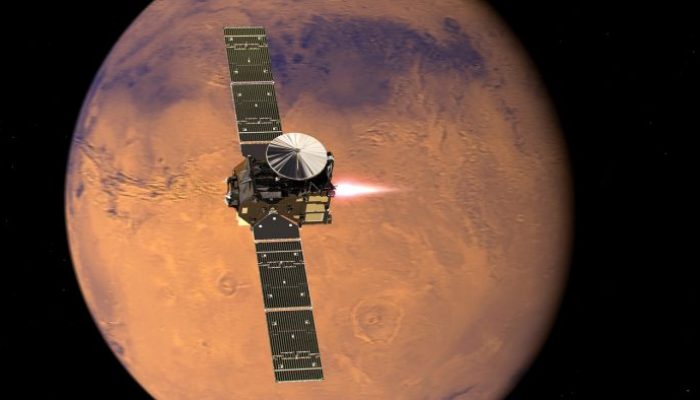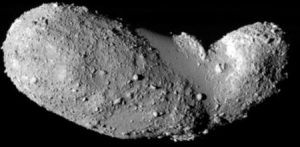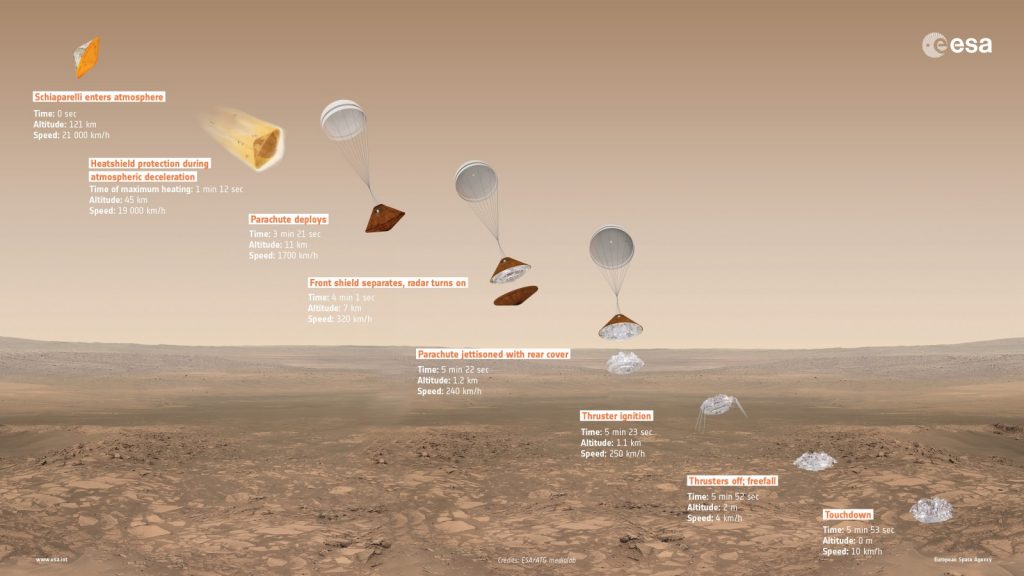
Normally, September is not people’s favorite month as it goes with the end of the summer holidays, the beginning of the academic year and that of autumn. Not much to be happy about.
Thankfully, space and planetary science is here to help you overcome this difficult period with lots of exciting events.
Fly me to Bennu
Asteroïds and comets were formed at the same time as the other planets, at the beginning of the Solar System. But unlike planets, they have not been altered by active geology, erosion or life. They are in pristine condition and can give precious information about the formation of our solar system.
But despite our efforts, studying an asteroid from the orbit is not as efficient as experiments that can be conducted in a lab with a better equipment. This is why the samples from the lunar soil brought by Apollo (USA) and Lunokhod (USSR) missions are so valuable. And there has been an old desire to have a mission that would bring back samples of an asteroid to Earth.
A first attempt was made by the Japanese probe Hayabusa launched in 2003 which flew to the asteroid Itokawa. The probe tried to take a sample by throwing a projectile to the asteroid while flying very close to it and then “suck” a few grams of ejected samples from the surface. Sadly, the experiment didn’t work fully and only a few micrograms of dust were taken and brought back to Earth in 2010.

Picture of the asteroid Itokawa when visited by the Hayabusa spacecraft. Credit; JAXA
NASA has now a similar plan with the mission Osiris REX, which will fly by asteroid Bennu and take a sample. This mission is launched on the 8th of September and will take a few years to reach Bennu in August 2018. Then, after an observation period, the probe will try to take a sample from the surface with an extended arm that will touch the surface for a few seconds while blowing nitrogen to lift materials from the surface and capture them. The spacecraft will then leave Bennu in 2021 and bring back the sample capsule to Earth in 2023.
If everything goes well, up to 2000 grams could be taken, allowing for a detailed study of the components of this alien soil in ground-based laboratories!
Rosetta’s Grand Finale
If you’re a space enthusiast, you’ve probably heard of the Rosetta mission to comet 67P Churyumov Gerasimenko. This European mission is designed to study the comet for a long period, in particular studying how the comet changes as it moves around the Sun. As the comet moves closer it gets warmer and the tail and coma start to form. One of the goals was to monitor this activity of the nucleus of the comet, before, during and after its closest approach to the Sun.
But Rosetta is also a famous mission because it carried the lander Philae which successfully (but not without some bumps) landed on the comet and carried some measurements. The adventures of Rosetta and Philae were followed with a lot of attention by Earthlings, including the recent retrieval of Philae, but ESA has one final trick up its sleeve.
Indeed, on September the 30th, Rosetta will make a final descent towards the surface and land on 67P! This will allow for unprecedented im
ages and scientific measurements of the comet’s nucleus, before the spacecraft makes a controlled landing, that will end its tremendous adventure.
On this topic, Matt Taylor, the Rosetta Project Scientist, came to EGU 2016 to give a lecture about the mission. He also gave an interview to Laura roberts-Artal for the GeoLog blog that you can find here.
Big Brake for TGO
After Rosetta, the European mission to follow will probably be ExoMars! The whole ExoMars programme is actually in two phases: the first part, launched in March 2016 comprises the Trace Gas Orbiter (TGO) and the Schiaparelli lander. TGO aims at mapping the martian surface and will be looking at biological signatures, in particular atmospheric components such as methane. The Schiaparelli lander will take measurements from the surface and will allow ESA to test important re-entry and landing procedures (this is very important for ESA as the previous attempt to land Beagle 2 in 2003 was unsuccessful). The lander will hence pave the way for the landing of the rover Pasteur, as part of the ExoMars 2020 phase.
But before this, TGO needs to be inserted in Martian orbit. After several adjustments burns during the cruise towards Mars, TGO will make a final series of manoeuvrers: release of the Schiaparelli lander onto its landing trajectory on the 16th of October, adjustment of the orbit on the 17th and the final burn on the 19th of October to insert TGO into Martian orbit while the lander will descend and reach the surface. TGO, Mars Express (the current ESA probe around Mars) and other radiotelescopes on Earth will listen to Schiaparelli to determine if the descend was successful. The lander will only run on batteries limiting its mission to a few days.
TGO will not be immediately doing its norminal science programme as it will go through a several-month aerobraking phase needed to adjust its orbit. In this process, TGO will go very close of Mars, skimming the upper layers of its atmosphere, which will slow it down (hence the name “aerobreaking”). This will give an opportunity for measurements of the upper atmosphere along with saving fuel as no engine burn is required. This is also a first time for ESA, after the tests conducted at the end of the mission Venus Express.
Lots of space adventures to follow, so hopefully, you won’t miss summer too much!


![[ECS Interview] On the surface of Churyumov-Gerasimenko with Philae and Anthony](https://blogs.egu.eu/divisions/ps/files/2016/10/Rosetta_impact_1280-e1477918588515-161x141.jpg)